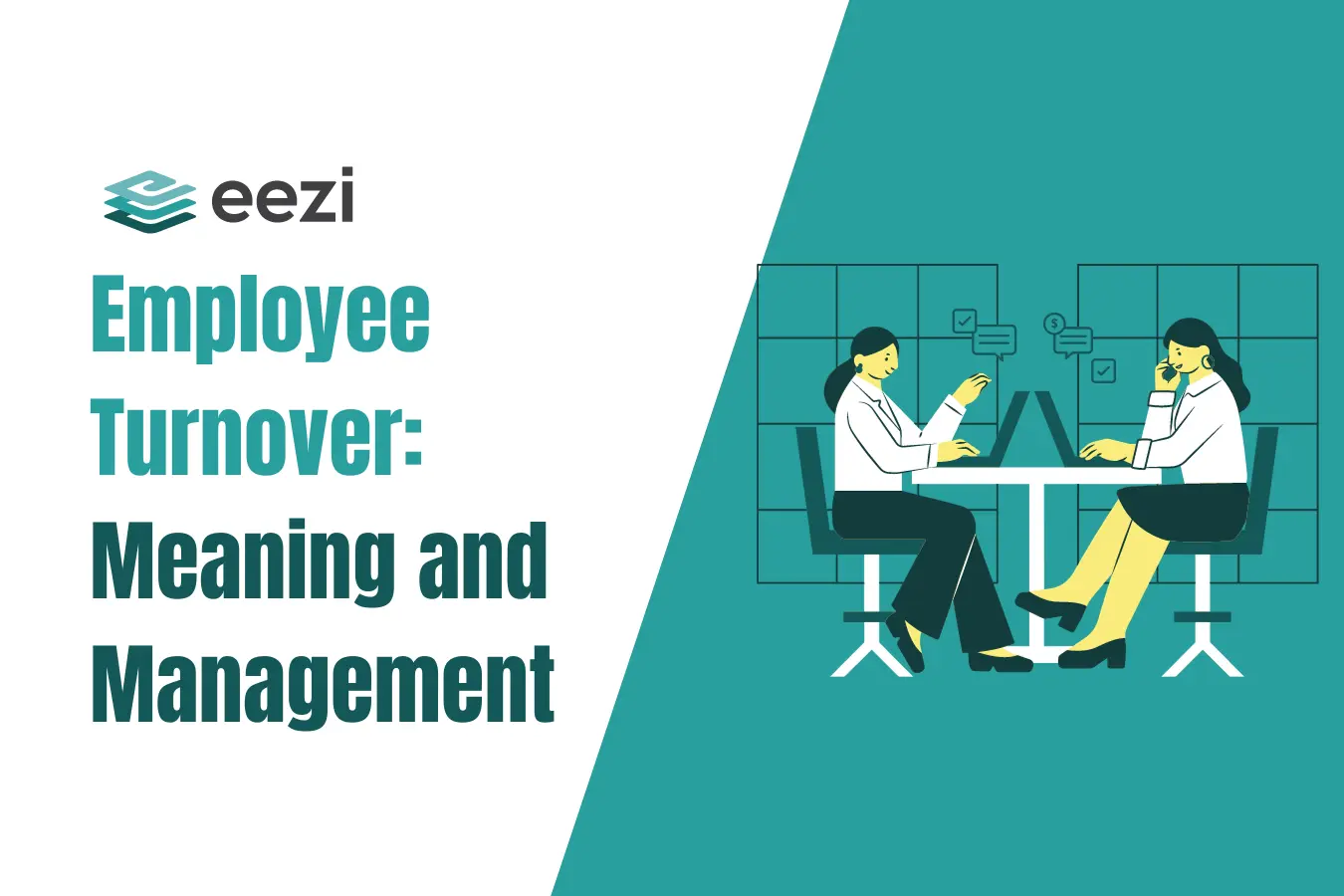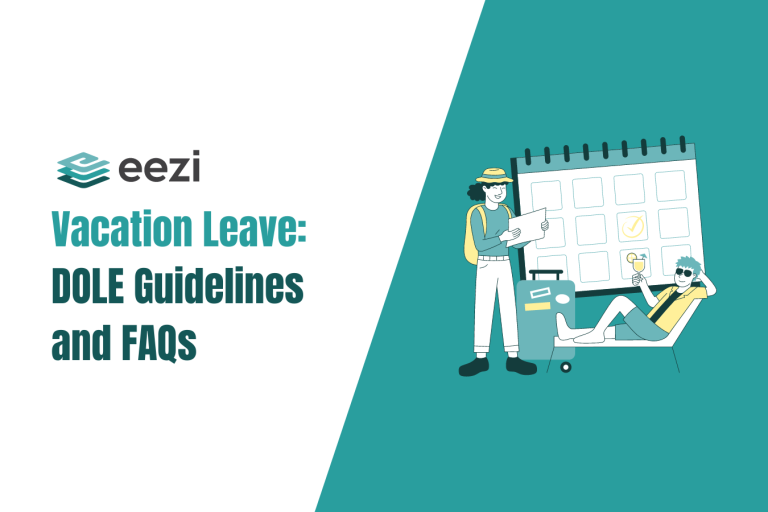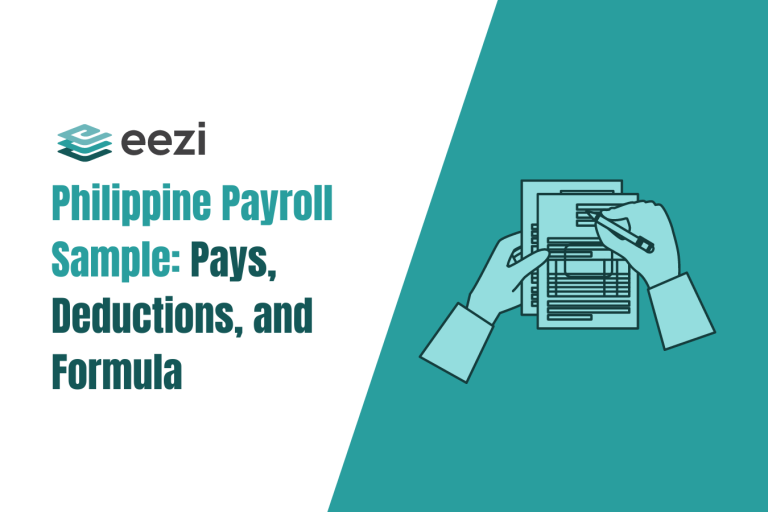What is employee turnover, and why does it matter to your company?

Like a beautifully designed cake, a successful workplace has multiple layers, each contributing flavor and consistency. But what would happen if one of those layers began to crumble and ruin the whole thing?
Imagine that you’ve been honing your plan for success for months. You’ve recruited outstanding individuals, developed them into the best employees in your company, and established a work environment that is as welcoming as the smell of freshly made cakes.
But the harsh reality is that employee turnover might be the sneaky icing on top that ruins your hard-earned goals. This can majorly impact your company’s revenue, morale, and efficiency.
But don’t worry! You can reduce turnover if you apply suitable approaches. In this article, we’ll explore the meaning of employee turnover, its causes, and ways to reduce it.
eezi HR Guide
Implement a new HRIS system like a pro!
What is employee turnover?
Employee turnover is the total number of workers who leave a company within a given time frame, usually a year. Although turnover is typically measured by the overall number of employees leaving a company, it can also apply to specific departments or demographic groups within a company.
Employee turnover includes both voluntary turnover and involuntary turnover from the company due to poor performance, reductions in force, or terminations, regardless of whether other individuals took up the positions.
Turnover rate
The frequency with which workers leave a company and are replaced by new ones can be determined using the employee turnover rate.
It is computed by dividing the number of departing employees within a given time frame by the average number of employees throughout the same time frame. Typically, the turnover rate is a percentage.
A low turnover rate indicates that employees often remain in their positions longer, whereas high turnover indicates that many people are departing the company.
Any company will naturally experience employee turnover. High turnover can be undesirable, though, since it costs money and effort to attract and train new hires.
While most organizations aim for low staff turnover, what really distinguishes low from high turnover is how actual turnover compares to an expected or average rate. This varies based on a number of factors, including industry, job type, company size, area, and more. It is important to note that this percentage is almost never zero.
By prioritizing employee retention first, you may improve the employee experience, reduce unwanted turnover, and maintain a balanced and sustainable employee turnover rate.

Types of employee turnover
Turnover covers all separations, including those who quit on their own choice and those who are let go as part of a force reduction or round of layoffs.
It also covers separations brought on by impairment, death, and retirement. In contrast to employee attrition, which solely takes into account voluntary turnover, turnover takes into account all departures from the firm.
Voluntary turnover
Employees who leave a company voluntarily—typically to take a new position at another company, pursue more education, leave for personal reasons, or retire—are counted as part of the voluntary turnover rate.
Involuntary turnover
Employee terminations that occur due to misconduct, inability to fulfill performance standards and job expectations, seasonal layoffs, or company-wide layoffs are all considered forms of involuntary turnover.
What does high employee turnover mean?
A high employee turnover rate means there are more employees leaving the company. These employees who leave typically need to be replaced by new hires. A common cause of employee turnover is inadequate hiring practices and ineffective management.
Turnover can result from firing someone, people quitting to choose a position they think is better, or workers feeling they couldn’t continue their careers at your company.
eezi HR Guide
Stay compliant with the required employee benefits in the Philippines.
What are the main causes of employee turnover?
Employees quit a department or a company for various reasons, and while some of these causes are unfavorable, some employee turnover is reasonable and expected. High turnover that occurs unpredictably or for negative causes is undesirable.
High employee turnover rates could indicate unresolved problems inside the company. Employees often quit their jobs due to insufficient pay for their present position.
Other typical causes of undesirable turnover are as follows:
- Lack of opportunities for remote or hybrid jobs
- Poor management
- Natural advancement in one’s career path
- Absence of growth or professional development opportunities
- Internal promotion or relocation
- Dissatisfaction with the management or the boss
- Poor compensation
- Poor employee engagement
- Being burned out or feeling overburdened
- Toxic workplace culture
- Lack of employee recognition
- Poor work-life balance
- Life of family events
- Interesting offers
- Involuntary exit
Companies can maintain the desired level of workforce by implementing the required changes with the support of an understanding of the causes behind staff turnover.
Read More: Staying compliant with payroll in the Philippines
How to calculate the employee turnover rate?
Here’s how to calculate the employee turnover rate:
Determine the total number of employees you have.
Almost all employee types should be factored in when measuring turnover rate. However, do not include temporary workers or employees on short-term leave in either factor. Your turnover rate will appear larger than it is if you include temporary shifts in the workforce analytics.
Select the time period you wish to use to get the turnover rate. The majority of businesses calculate the monthly employee turnover rate and annual turnover rate.
Next, determine the average number of employees within that time frame and the total number of departing workers, regardless of whether their post has been filled.
For example, you might have had, on average, 130 active employees in Q1, and 25 of them left during that time—none of whom were seasonal employees or taking time off.
Calculating the rate
When calculating employee turnover rate, divide the average number of employees (130) by the number of departing employees (25). The average employee turnover rate can then be obtained by multiplying the value by 100.
The turnover rate formula would be (25/130) * 100 = 19.23. 19.23% is the average turnover rate percentage.
This figure shows that about 19.23% of the workforce left the company during this quarter.
Is employee turnover good or bad?
One of the most crucial factors for every company to monitor is employee turnover. It informs you of the level of employee satisfaction and likelihood of leaving.
Although it is commonly believed that employee turnover is a negative thing, not all turnover is. In reality, a company’s growth and progress may be indicated by a good turnover rate.
When workers leave your company for new challenges or better career growth prospects, that is considered a healthy employee turnover rate.
“Desirable” turnover
Desirable turnover is beneficial to your business for several reasons, including the opportunity for team members to grow professionally, the emergence of new ideas and perspectives, and the opportunity it creates to introduce new employees with an array of experiences and abilities.
Not to mention that it might improve your company’s reputation. It’s crucial to have a good employee turnover rate since it makes your team stronger. When team members leave, it gives other workers the chance to step up and assume more responsibility.
Undesirable turnover
Conversely, turnover can be a challenge to businesses as it can result in reduced production, high recruitment costs, costly training for new employees, and lowered morale among existing staff members.
Finally, companies may find it challenging to draw in and keep the best employees due to high employee turnover rates.
The multiple factors influencing the high turnover rate mean that there are many criteria for what constitutes good or bad.
The impact of employee turnover on organizations
Employee turnover refers to the rate at which employees leave a company and are replaced by new hires. This phenomenon has significant impacts on various aspects of an organization, including financial costs, team morale, and overall productivity.
Here are the impacts of employee turnover and why managing turnover effectively is crucial for any business.
Costs associated with recruiting and training new employees
Recruitment costs involve several components. Organizations spend substantial amounts on job advertisements and recruitment marketing, whether on job boards, social media platforms, or recruitment agencies. The time and effort HR professionals and recruiters invest in screening, interviewing, and selecting candidates add to the overall recruitment costs.
Additionally, costs for background checks, drug testing, and onboarding activities, including orientation sessions and initial training, are significant.
Training costs are another major expense. New hires often require extensive training to get up to speed with the company’s processes, tools, and culture. This includes both formal training sessions and on-the-job training. During the initial period, new employees typically take time to reach the productivity levels of their predecessors. This period of adjustment can lead to temporary productivity dips.
Effects on team morale and productivity
Employee turnover can severely impact team morale. When employees leave, especially those who are well-integrated into the team, it disrupts team dynamics and can lead to feelings of instability among remaining employees. Remaining team members often have to pick up the slack left by departing employees, which can lead to increased stress and potential burnout.
Turnover also affects productivity. Departing employees take with them valuable institutional knowledge and skills, which can lead to inefficiencies and mistakes until replacements are fully trained. High turnover can lead to disengagement among remaining employees, who may feel less committed to an organization perceived as unstable.

Tips to reduce employee turnover
Let’s look at some ways to lower turnover and foster a work environment that attracts and retains employees.
1. Establish a nurturing workplace culture
A nurturing environment keeps employees engaged and dedicated, much as a welcoming environment entices visitors to stay.
Encourage open communication, offer opportunities for development, and support a healthy work-life balance. The key to lowering turnover is to have an employee-valued and supported company culture.
2. Provide competitive benefits and compensation
For employees to remain content, competitive pay and benefits are necessary. Give performance-based incentives, execute regular wage evaluations, and give purely financial incentives. Employees will be less drawn in by offers from other companies if you demonstrate to them how much you value them.
3. Create employee development strategy opportunities
Employees seek opportunities to advance and grow. Provide professional pathways, mentorship programs, and training. By making investments in your employees’ career goals development, you can build an employee who is driven to work hard and advance within your company.
4. Be open to change
Accept remote job opportunities, flexible scheduling, and a good work-life balance. By meeting their requirements, you’ll establish an atmosphere that promotes their well-being on both a personal and professional level.
5. Strengthen management and leadership
A high rate of termination indicates issues with the hiring process. Employee turnover reduction is mainly dependent on competent management and leadership.
Encourage leaders to build strong bonds with their teams, be encouraging, and give and receive feedback regularly. A solid foundation for leadership fosters an atmosphere where workers feel appreciated and encouraged.
6. Promote a good work environment
A pleasant work environment raises moods and fosters a feeling of connection. Promote cooperation and recognize accomplishments. When workers enjoy their jobs, they are less likely to look for alternatives.
7. Maintain a healthy work-life balance
Balance is essential. Employee dissatisfaction is likely to occur if they are overworked. Ensure your workers’ workload is reasonable enough to prevent them from constantly having to start or end work early. Encourage employees to have their lunch in full.
It’s crucial to take into account every employee you have. It’s critical to organize social events with coworkers to foster positivity and a positive work atmosphere.
Take away
Employee turnover is caused by several factors. Fortunately, a lot of them are under control.
You can simultaneously improve employee retention and well-being by being aware of the common causes of employee turnover and how to prevent it. Conduct exit interviews if you want to find out why your employees are leaving.
Moreover, giving top performers the chance to advance within the company gives them an incentive to stay. Additionally, you may lower employee turnover by offering competitive pay and benefits, recognizing milestones, and providing a pleasant onboarding experience.
Stay Updated of Your Employees’ Performance and Attendance Easily
When you’re prepared to provide your employees with compelling benefits, eezi HR software is here to help!
Organizations like yours can effortlessly design and administer flexible employee benefits with the help of eezi Human Resources Management software. It digitizes your business’s and your employees’ records for simple updating and organization.



